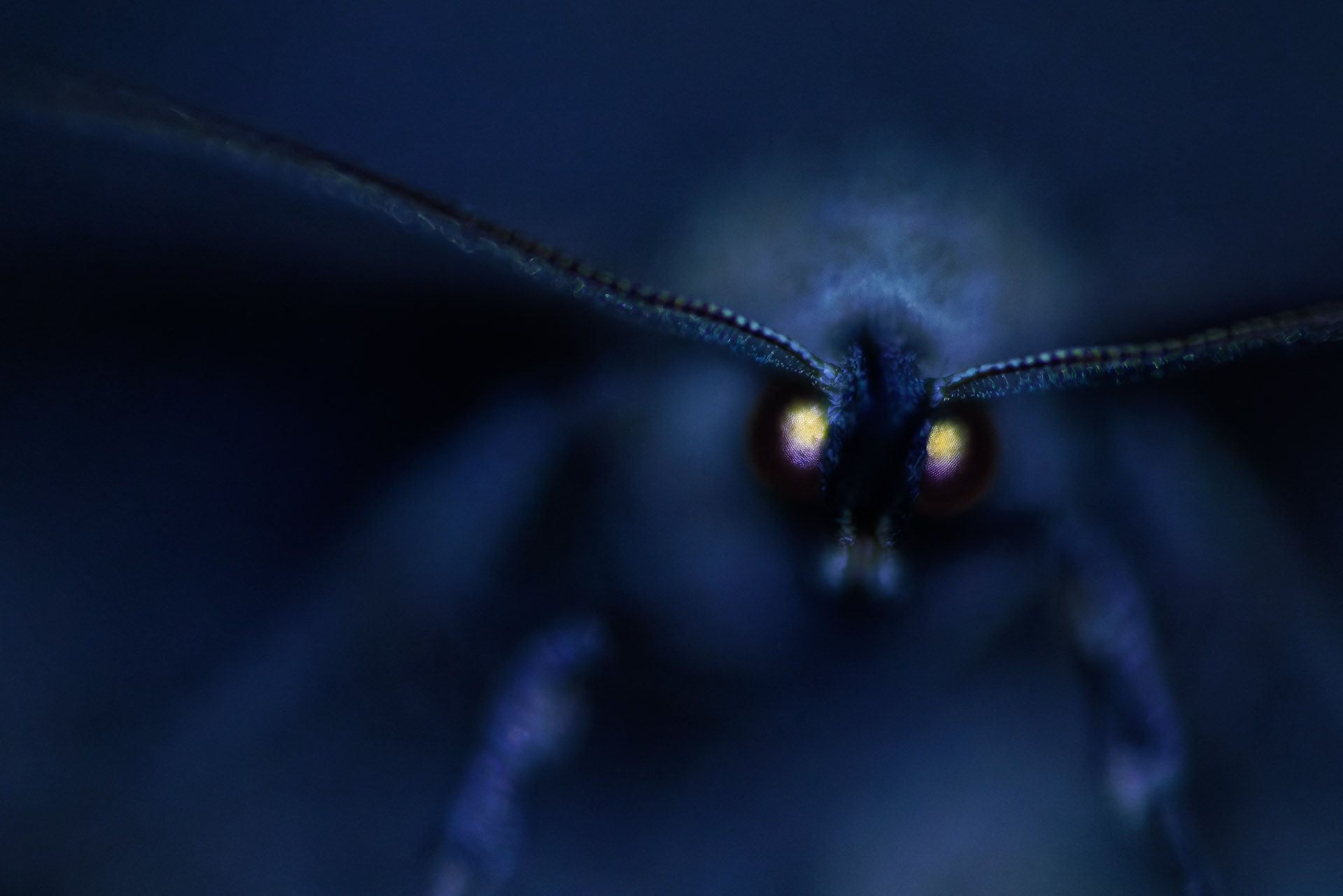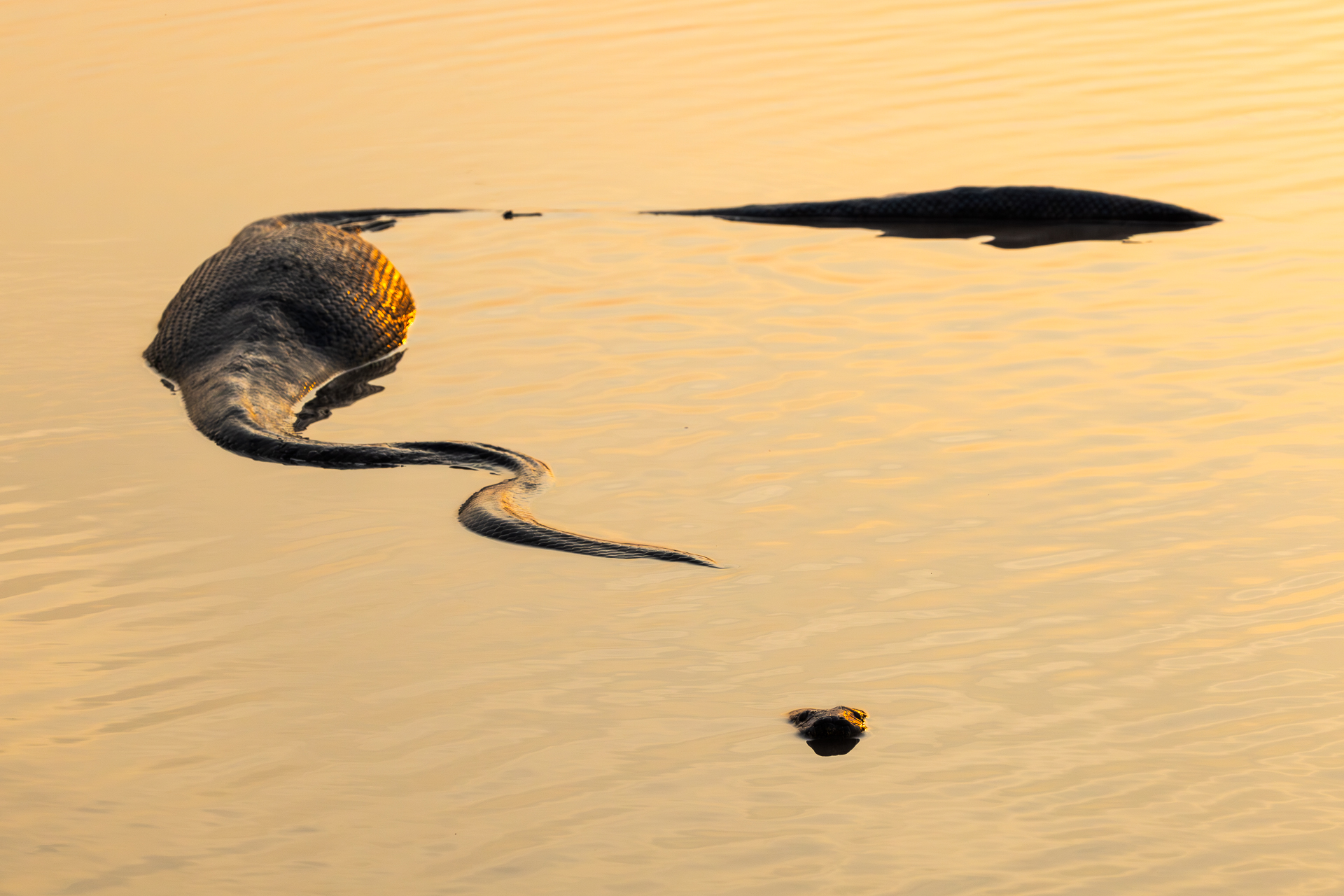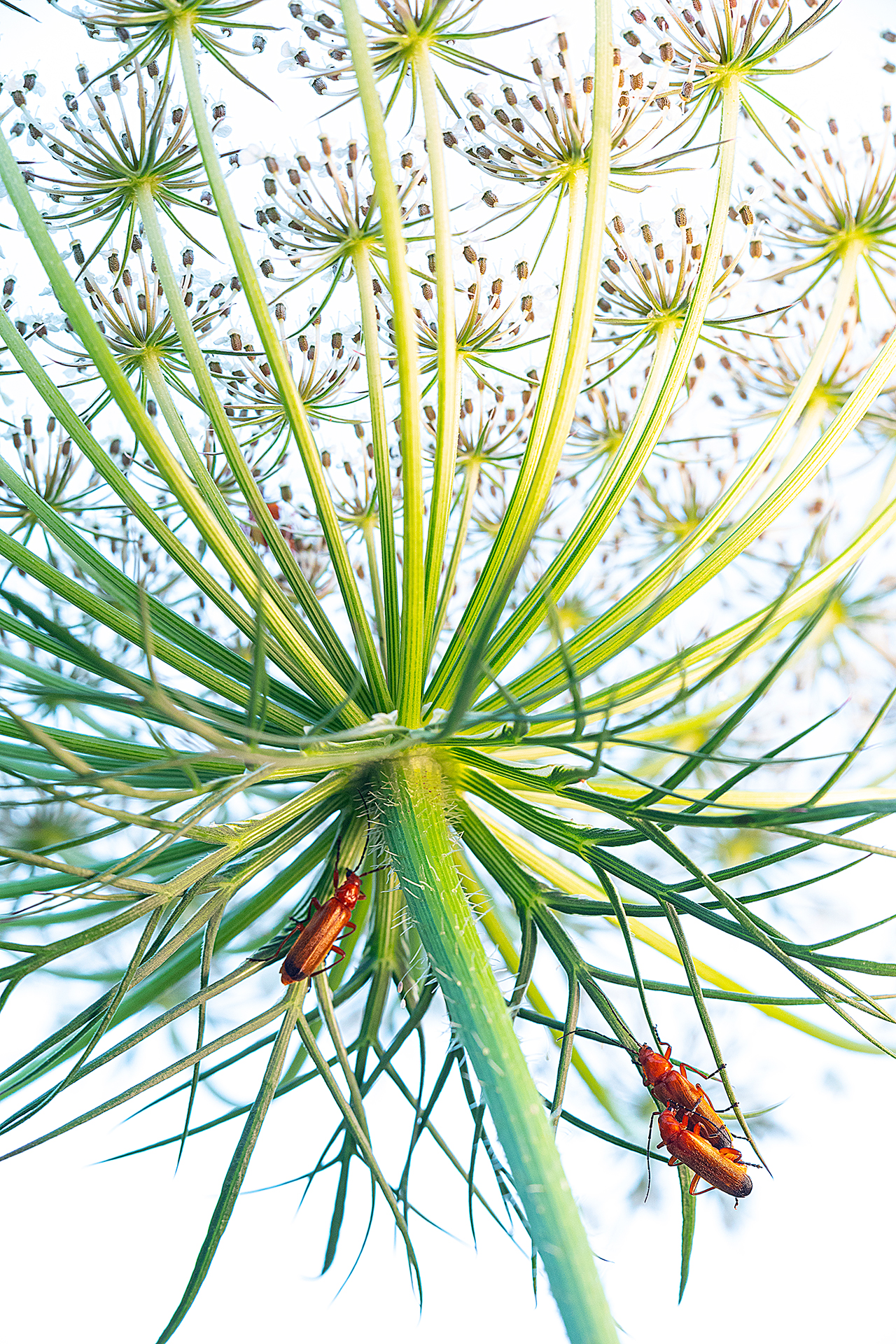GALLERY MONTPHOTO 2025
Other animals
Brillo de ojos de Ivo Niermann de Laatzen (Niedersachsen)
Place: Laatzen, Niedersachsen (Alemanya)
Description:
any nocturnal animals have a tapetum lucidum, a biological adaptation designed to enhance vision in the dark. This effect is known in mammals. Some insects and spiders also exhibit this phenomenon, even though their compound eyes have a completely different structure to that of mammalian eyes. The photo depicts a moth (Noctuidae).
Anaconda de Antonio Núñez Lemos de Lutry (Vaud)
Place: Casanare, Los Llanos (Colòmbia)
Description:
April. With the arrival of the rainy season, a Green anaconda (Eunectes murinus) creeps through the shallow waters of the plains at dusk. Its silhouette reveals a swollen belly. It has caught a baby capybara (Hydrochoerus hydrochaeris) and now seeks a safe place where it can digest it at rest, a process that can take several weeks in the calm of the wetland.
Patas largas de José Luis Gigirey González de Covas (Ames) (A Coruña)
Place: Covas, Ames (La Corunya, Espanya)
Description:
An opilion next to small mushrooms of the genus Xylaria waits patiently for its next prey on a rainy autumn night. The scene was lit with two flashbulbs and a continuous light from a torch to highlight their silhouettes in the dark.
Reunión de Alfonso Lalastra de La Cavada (Cantabria)
Place: La Cavada, Cantàbria (Espanya)
Description:
This photo was taken very close to my house. In this photo you can see on a wild carrot (Daucus carota) a gathering of commons red soldier beetles (Rhagonycha fulva) ready to mate. I took a low angle photo to try to give more emphasis to the whole.
Art of hiding de Pratik Pradhan de Badlapur (Maharashtra)
Place: Amboli (Índia)
Description:
I shot this picture in Amboli forest of India, which is known as a hotspot for some endemic species. We saw a few gliding frogs (Rhacophorus sp.) comfortably sharing the habitat of an elephant foot yam plantation (Amorphophallus paeoniifolius). I liked the arrangement of this plant's leaves and thought of taking a picture with a backlit external light. I tried different angles, trying to isolate a frog from its cluttered surroundings.
In the forest de Lorenzo Shoubridge de Borgo San Lorenzo (FI)
Place: Parc Natural del Mont Avic (Itàlia)
Description:
An European asp viper (Vipera aspis) lies among the branches in the undergrowth.In the silence of a still forest, it appears like an echo of a dream. The viper, a feared and misunderstood creature, moves with the grace of an ancient thought, between filtered light and slow shadows. In its gaze there is no threat, but memory. Photographing it like this, suspended in an unreal atmosphere, was like entering another time: slower.
I still see you de Norbert Kaszás de Esztergom ()
Place: PN Danubi-Ipoly (Hongria)
Description:
In a meadow at dawn in May, you can find many small wonders. In addition to the many blooming wildflowers, you can discover many small creatures, insects, butterflies. Nature awakens. It is wonderful to be a part of this, while being able to photograph such a beautiful moth as this Black-veined moth (Siona lineata).
Rules of the web site | Legal advice | Privacy statement | Cookies policy | Change cookies preferences
Administration | Web design: ATMultimedia.com



.jpg)

.jpg)
.jpg)
.jpg)



